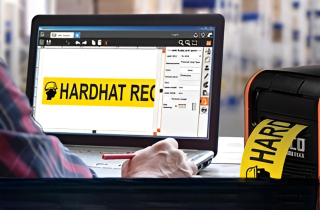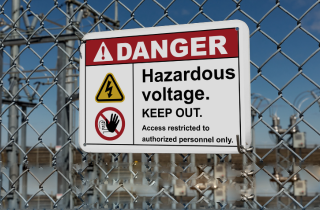OSHA Fire Readiness Essentials for Any Workplace

What Are Fire Safety Procedures and Why Do They Matter in the Workplace?
Fire safety remains a critical concern across industries. According to the U.S. Fire Administration (USFA), national estimates for non-residential building fires in 2023 included:
- 110,000 fires
- 130 deaths
- 1,200 injuries
- $3.16 billion in property damage
Given these statistics, it's important that employers and building maintenance managers prepare for fires and have plans in place for fire emergencies. Fire safety procedures outline the actions required during a fire emergency and assign responsibility for each action. Safety Managers can customize these plans to fit the specific facility, type of work, materials, and people present.
Fire safety procedures serve as a roadmap during emergencies, helping personnel respond quickly and correctly. These plans should be tailored to the facility's layout, operations, materials, and workforce. When paired with proper training, effective procedures can significantly reduce the risk of injury, confusion, and costly damage.
OSHA Regulatory Requirements
The only Occupational Safety and Health Administration (OSHA) regulation that specifically mandates fire safety procedures is 29 CFR 1915.502 – Fire Protection in Shipyard Employment. This standard requires the development of a fire safety plan for shipyard operations and includes a “Model Fire Safety Plan,” which can also serve as a general framework adaptable to other types of facilities.
More commonly, OSHA requires facilities to create written emergency action plans (EAPs) that incorporate fire safety procedures and actions for other emergencies.
However, OSHA only mandates an EAP under certain conditions, such as:
- Process Safety Management of Highly Hazardous Chemicals (29 CFR 1910.119)
- Fixed Extinguishing Systems (General) (29 CFR 1910.160 — when the extinguishing system could pose a significant health hazard)
- Fire Detection Systems (29 CFR 1910.164 — when actuation of the fire detector is delayed more than 30 seconds)
- Grain Handling Facilities (29 CFR 1910.272)
- Ethylene Oxide Exposure (29 CFR 1910.1047)
- Methylenedianiline (MDA) Exposure (29 CFR 1910.1050)
- 1,3-Butadiene Exposure (29 CFR 1910.1051)
Even when a formal emergency action plan is not required by OSHA, establishing fire safety procedures is still a best practice. For example, a small office may fall outside the scope of OSHA’s mandatory planning requirements. However, by adopting basic fire safety measures—such as conducting regular fire drills, clearly marking all exits, and training employees on evacuation protocols—facility managers can strengthen preparedness and minimize risks. Proactive planning supports a safer environment and can significantly reduce the likelihood of injury or property damage during an emergency.
The Role of a Fire Risk Assessment
The first step in creating facility-specific fire safety procedures is to conduct a fire risk assessment. This assessment provides the necessary information to develop an effective and comprehensive plan. A fire risk assessment should cover: 
- Identification of hazards
- Sources of ignition
- Identification of persons at risk from fire
- Means of escape from building
- Fire warning systems
- Firefighting facilities
- Identification of fire safety procedures
- Review of controls and recommendations for improvement
Conducting a fire risk assessment helps identify potential vulnerabilities and confirms that fire safety procedures are both effective and comprehensive. This assessment should be performed by a qualified professional—such as a Certified Fire Protection Specialist (CFPS), fire safety engineer, or experienced fire risk assessor with proper credentials.
Regularly reviewing and updating the fire risk assessment is also essential, particularly when there are significant changes to the building layout, operational processes, or the introduction of materials or equipment that may affect fire safety.
Building OSHA Fire Safety Procedures That Work
After completing a fire risk assessment, facilities should use the findings to develop procedures tailored to their specific layout, structural features, and existing fire protection systems. OSHA’s EAP requirements offer a strong framework for creating effective fire safety procedures. These procedures should:
- Establish evacuation routes and procedures
-
Designate areas of refuge and outline evacuation plans for those areas
- Provide procedures for evacuating employees with disabilities
- Implement a system to account for all evacuated personnel
- Define conditions under which employees may attempt to fight a fire
- Require appropriate firefighting training
- Specify placement of necessary firefighting equipment
- Establish procedures for shutting down critical equipment and evacuating employees who remain behind temporarily
- Identify preferred methods for alerting employees to a fire emergency
- Require a functioning alarm system throughout the workplace
The fire safety procedures must be combined with employee training. Employees need to know their tasks during a fire emergency, even if it's just to evacuate the building. Familiarize new employees with the fire safety procedures, and provide existing employees with periodic retraining, especially if procedures change. Facilities should make the entire set of fire safety procedures accessible for employee review.
Should Fire Safety Procedures Include Portable Fire Extinguishers?
OSHA does not require employees to use portable fire extinguishers during an emergency. In most cases, the safest response is to evacuate and allow trained emergency personnel to manage the situation.
However, if a facility chooses to permit or expect employees to use fire extinguishers, those circumstances must be clearly outlined in the fire safety procedures. Employers are also required to provide hands-on training to ensure proper and safe use.
For full requirements, refer to 29 CFR 1910.157 – Portable Fire Extinguishers.
Fire Safety Procedures for Evacuations

Ensuring that all occupants can safely exit the building during a fire is a core element of any fire safety procedure. OSHA requires workplaces to have an adequate number of emergency exits, appropriately located to support fast and safe evacuation. Several factors influence exit planning, including the type of structure, the number of individuals present, available fire protection systems, the nature of the work being performed, and the building’s construction.
For evacuation plans to be effective, exits must remain unblocked, unlocked, and clearly identifiable at all times. Fire safety procedures should also establish both preferred and secondary exit routes to account for the possibility of blocked pathways. In addition, designated evacuation assembly points should be included to help account for all individuals once they have exited the facility.
DuraLabel Fire Safety Solutions That Meet OSHA Regulations
DuraLabel offers fire safety solutions designed to enhance workplace safety and compliance. This range of products includes durable, high-quality signs, labels, and printers engineered for fire safety applications. These solutions help organizations effectively communicate fire safety procedures, identify emergency exits, and mark fire-fighting equipment locations.
The DuraLabel Kodiak Max Industrial Sign and Label System is a complete in-house industrial label printer that can meet all of your fire safety labeling needs. By integrating DuraLabel products into your fire safety plan, you can ensure clear, consistent, and compliant safety communication across your facility.
Download the free OSHA Signage Quick Start Guide to guarantee your facility is OSHA compliant. This helpful resource offers a site inspection checklist to guarantee nothing gets overlooked.
Get help crafting a system that will provide the safety communication you need. Call 1-888-402-8820 and one of our experts will guide you through the process.
Read Next:
OSHA Signs Regulations and Compliance: Everything You Need to Know
Related Resources

International Fire Code: Fire Prevention and Safety Standards
The International Fire Code (IFC) provides fire prevention and safety standards for existing buildings. It ...
Read
OSHA Fire Safety Rules That Could Save Lives and Property
How Can Businesses Prevent Workplace Fire Hazards? In any workplace, fire safety is not just a box to tick—it ...
Read
Five Ways You Can Prevent Fires at Your Office
National Fire Prevention Week is October 9-16 and gives good cause for pause for many of us who work in ...
Read.png)





